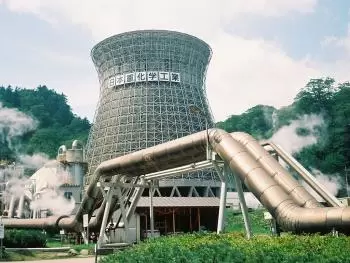
Geothermal energy is a renewable energy source that harnesses the heat from the inner layers of the Earth’s surface.
There are two types of geothermal energy: First, there are high-temperature geothermal power plants designed to produce electricity. In the second place, domestic facilities use geothermal heat pumps to obtain domestic hot water(DHW) and have thermal energy for heating systems.
These two types of installations have different pros and cons, but in both cases, they are an alternative to the disadvantages of fossil energy.
Despite the cons of geothermal energy, such as its high initial cost, Ii this article, we analyze the main advantages, which are the following:
-
It is an inexhaustible source of renewable energy.
-
Better efficiency compared to other renewable sources.
-
Constant and predictable energy resource.
-
Environmentally friendly and sustainable since it does not release greenhouse gases.
-
Available in any geographic area.
-
Useful in heating and cooling systems.
Let’s analyze each one in detail:
1. It is a renewable energy source
The main benefit of geothermal energy is that it is renewable energy.
Renewable energy is the energy obtained from virtually inexhaustible natural sources, either because of the immense amount of energy they contain or because they can regenerate themselves by natural means.
The temperature in the lower layers of the Earth remains constant. For this reason, thermal energy extraction is rapidly restored, making this source of heat an inexhaustible resource.
Unlike other non-renewable energies, no fossil fuel or uranium (nuclear power) is required to exploit geothermal energy.
2. Higher efficiency
Of all the renewable energies (solar energy, wind energy, hydropower, etc.), geothermal energy is the most efficient renewable energy. The only energy losses are the heat energy lost during transport from the Earth's internal layers to the surface.
The process of extracting the internal energy from the heat source is carried out using a heat exchanger. The heat energy passes to a fluid that circulates through ducts to raise the heat to the surface. The conduits to carry out this process are very well insulated, so the amount of energy lost is minimal.
3. Reliable constant energy resource
One of the advantages of geothermal energy compared to other renewable energy sources such as solar or thermal energy is the ability to maintain constant energy production.
This energy source allows an energy forecast to be made.
In the case of geothermal energy, the source of value is several meters underground. The amount of soil on top of the heat source performs a potent insulating function that keeps the temperature stable throughout the different seasons of the year. In other words, the thermal inertia is very high and does not vary at different times of the year.
This advantage of geothermal energy allows calculations and forecasts of energy needs.
As we have mentioned before, the temperature in the subsoil is constant. Therefore, the amount of thermal energy we can extract is predictable since it does not depend on atmospheric phenomena or solar time. Thus, this energy source allows an energy forecast to be made.
4. Environmentally friendly
Geothermal systems are a source of green energy because minimal waste is produced.
For this reason, geothermal energy causes a much lower environmental impact than that caused by the use of fossil energy or nuclear energy. In addition, it does not generate greenhouse gases and does not favor global warming or climate change.
The visual impact of a geothermal energy installation is minimal, as it is an installation underground.
A typical single-family home stops emitting two tons of carbon dioxide per year if it uses geothermal energy compared to a house with a natural gas boiler.
5. Wide geographical availability
When it comes to low-temperature geothermal systems (such as home systems) can be used in any geographical location.
Compared to its renewable competitors, it only needs a temperature difference between the lower layers and the environment.
On the contrary, solar energy and wind energy have a greater dependence on the location since they must be located in areas that are generally not cloudy or with a minimum wind intensity. Moreover, in the case of hydropower, this energy source can only be used in places where it is possible to store a considerable amount of water.
On the other hand, when it comes to geothermal power plants for electricity generation on a large scale, it is necessary to look for geothermal resources where the temperature gradient is higher. For example, in these cases, volcanic areas are excellent geothermal reservoirs.
6. It is helpful for heating and cooling
Geothermal energy can be used in a particular way. For example, in a private house with underfloor heating, the heated fluid can be circulated inside the earth to generate heat or cool. The average temperature obtained inside the planet is about 15 degrees Celsius, so geothermal energy can be used to cool the environment.
In the case of air conditioning, it is usually done with underfloor heating—no need for fans or interior devices in the rooms or outdoors, just a pump.
7. Economic efficiency
Probably, the main disadvantage of geothermal energy is its high initial cost. However, once the installation is done, maintenance is minimal. Therefore, the relationship between the kilowatt obtained by the cost derived from getting it is minimal.
The payback time of the investment in economic terms is meager. For example, a geothermal energy installation is amortized between four and six years. Thus, at this time, all the money saved in energy is equal to the price that it has been necessary to install the technology.
For example, for a family living in a house of about 150 to 180 m2, the economic saving that a system like this supposes is around 70%.